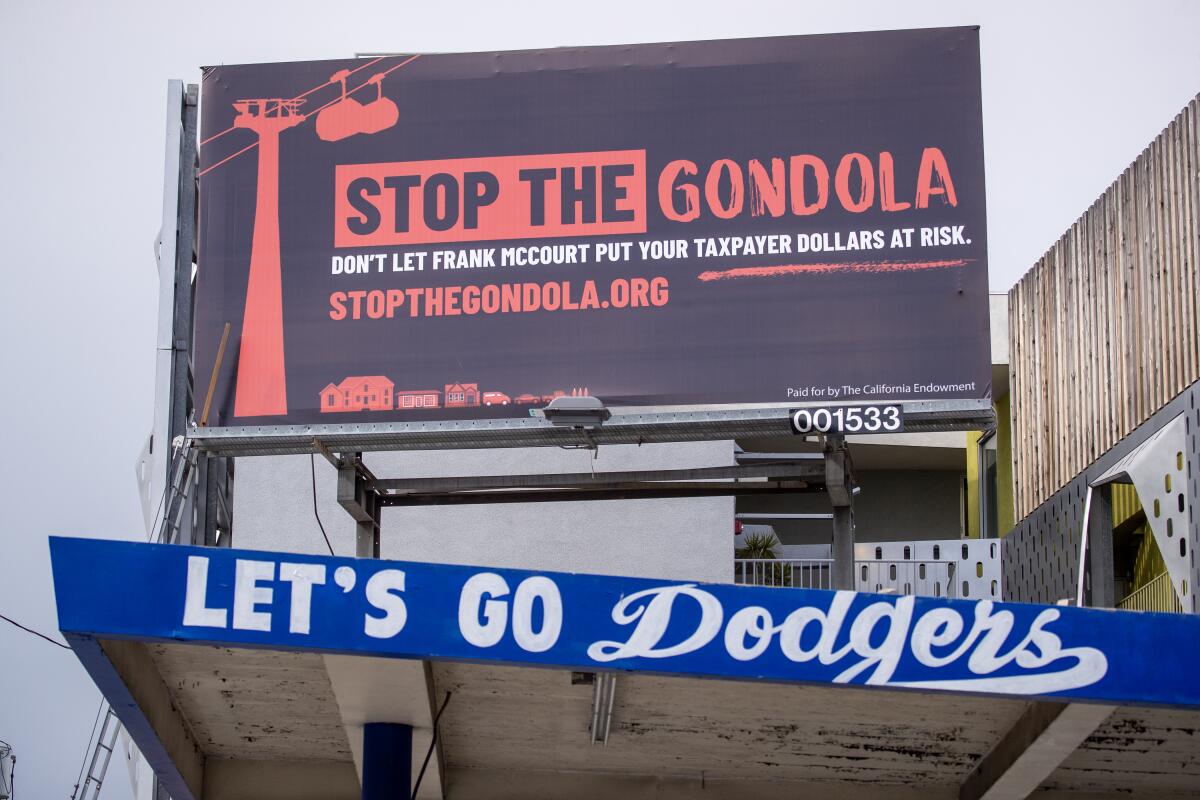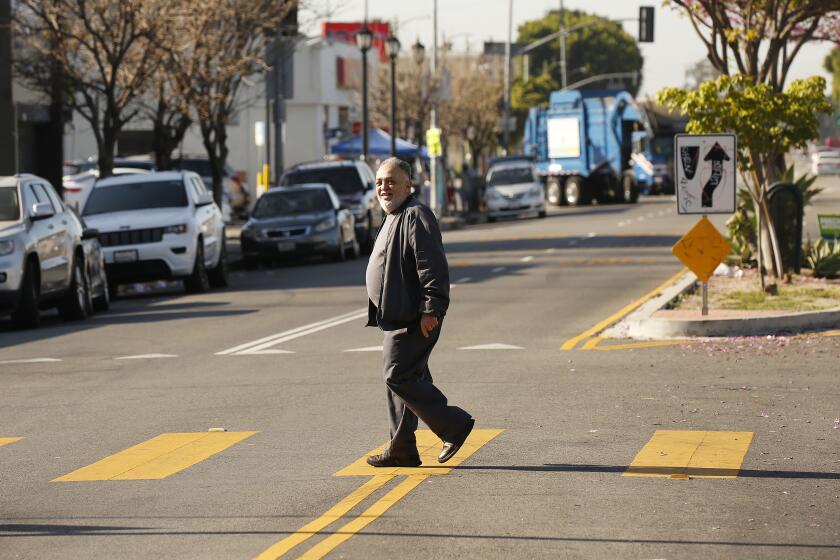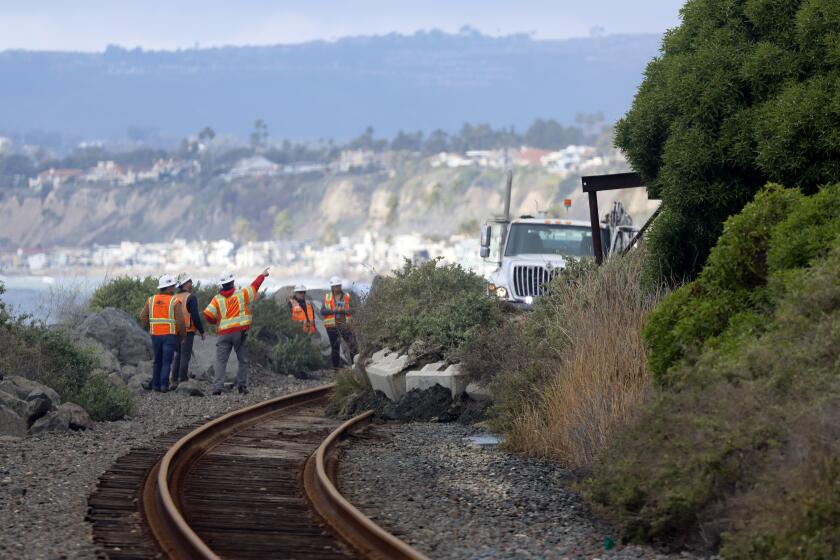Editorial: Let the Dodger gondola take flight. L.A. needs more transit options

- Share via
A long-discussed plan to build an aerial gondola to ferry riders from Union Station to Dodger Stadium heads to its first public vote on Thursday, and the mayor and other local leaders have finally weighed in on what it will take for this project to fly.
Mayor Karen Bass and her allies on the Metro board over the weekend unveiled a list of 31 conditions for approving the privately funded project, which was first proposed by former Dodgers owner Frank McCourt and is now overseen by a nonprofit called Zero Emissions Transit.
The conditions are sweeping and include requirements that the project not “seek or benefit from” public funds from local government, that proponents secure financial reserves in case the gondola fails and that they work with the community to come up with a plan to build more affordable housing and financially support small businesses in Chinatown that could be affected by the gondola construction and operation. Zero Emissions Transit would also have to pay for a permanent expansion of the Dodger Stadium Express shuttle bus program, effectively requiring the organization to fund a competing transit option.
Some of L.A.’s most powerful interests are trying to sabotage a March 5 ballot measure aimed at making streets safer for pedestrians, bicyclists and even drivers.
The most ambitious piece is a commitment that at least 25% of any future development of the parking lots surrounding the stadium, which McCourt co-owns with the Dodgers, be dedicated to affordable housing. Critics of the project suspect that the gondola is just a first step toward the eventual development of the stadium’s parking lots. That may be true, but any other development would require its own separate approval process.
The vote set for Thursday is only the first in a series of approvals that the gondola will need to get built, so the conditions may evolve. But it is heartening that local officials seem open to a new transit option while insisting on negotiating a better deal for the neighborhoods around the gondola and for the entire city.
Another landslide in San Clemente has closed the tracks to passenger trains. Officials need a long-term plan to move this important service to stable ground away from the ocean’s edge.
Proponents of the project say the 1.2-mile aerial gondola would make the trip from Union Station to the stadium in about seven minutes, with one stop in Chinatown, and would offer free rides to sports fans while easing traffic congestion and emissions. They want to have the system running by the time the city hosts the 2028 Summer Olympics, and insist the $500-million project will be built with private money, including bond financing, sponsorships and fares from tourists.
But some of those pledges are just that, and it’s appropriate to demand true guarantees that will ensure that if this project is approved it actually benefits the community and doesn’t suck up public money for private gain. Still, local leaders should beware of front-loading the project with so many requirements that the gondola never has a chance to take flight.
The U.S. EPA plans to reject Southern California’s plan to clean up ozone pollution, with big penalties for the region. Enough with the blame game. Officials need to get to work.
It’s an embarrassment that a city the size and stature of Los Angeles still lacks speedy and reliable public transit to one of the nation’s finest ballparks. While an aerial gondola in 2028 may not be the solution, just expanding the existing Dodger Stadium Express shuttle bus, as some have proposed, isn’t going to cut it either. L.A.’s transit infrastructure is so lacking that leaders and residents need to be open to creative ideas.
We’re sympathetic to some of the criticisms voiced by City Councilmember Eunisses Hernandez, who represents the area, and residents who would have large gondola cabins passing over their neighborhood every 23 seconds and live in the shadow of its massive support structures. We also worry some of these conditions may be difficult to enforce and contain loopholes that could be exploited in the future. But those are reasons to make them stronger, not block the project entirely.
L.A. desperately needs more transit projects of all sorts but has a sad history of delay and inaction on subway, light rail, bus lanes and other projects that faced neighborhood-level opposition. The region’s politicians too often back down in the face of any opposition, sacrificing worthwhile projects with the potential to help a transit-starved region function a little better. It’s their job to make sure that good projects get built to benefit everyone. When Metro board members take up the gondola Thursday, they should remember that.
More to Read
A cure for the common opinion
Get thought-provoking perspectives with our weekly newsletter.
You may occasionally receive promotional content from the Los Angeles Times.













